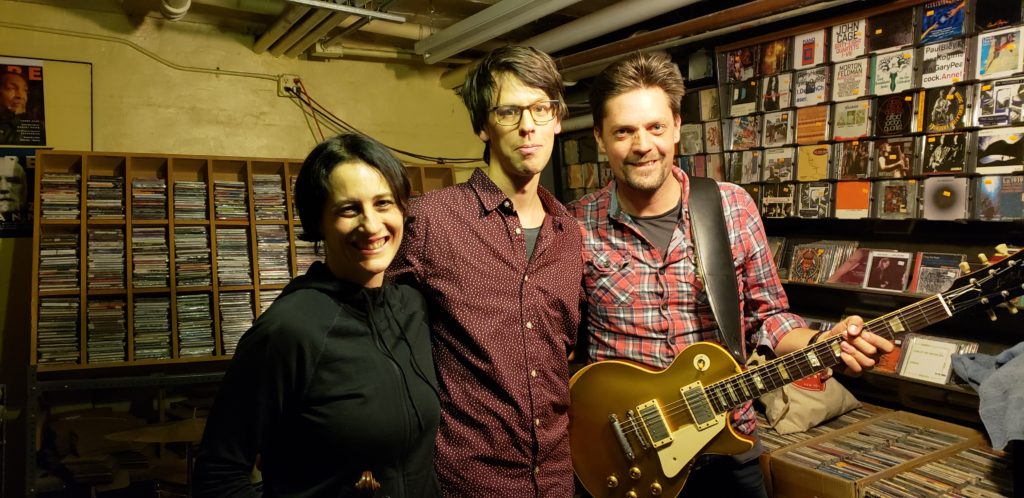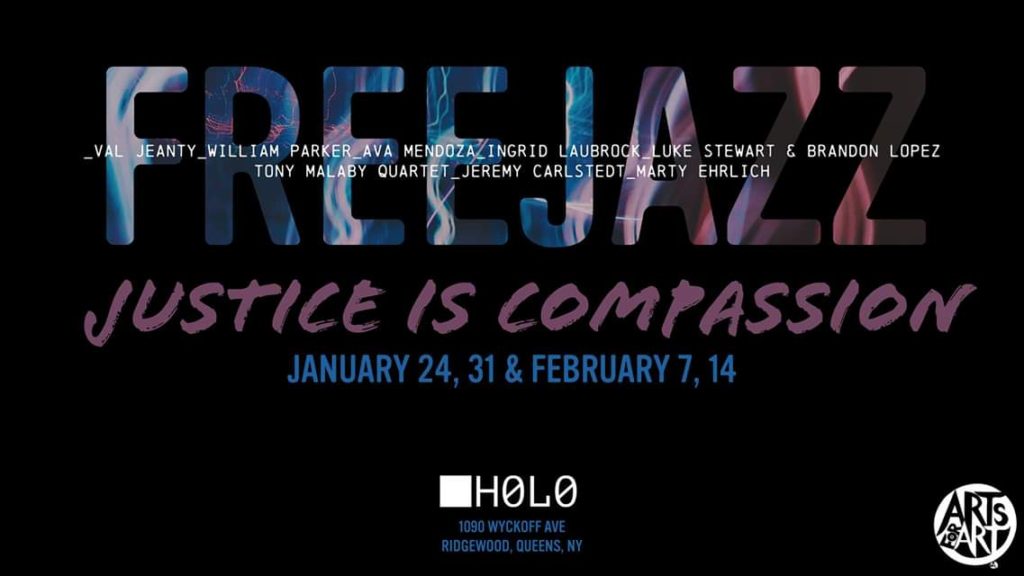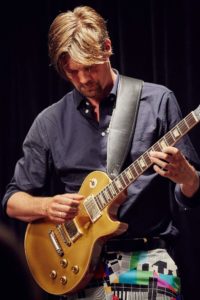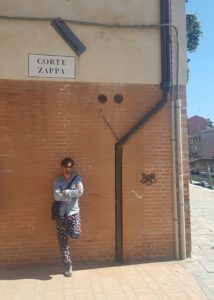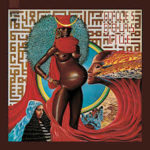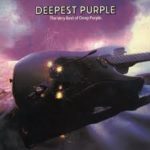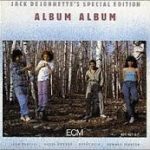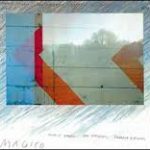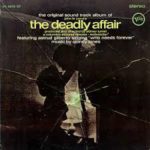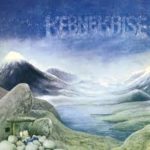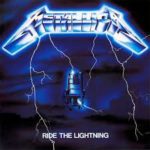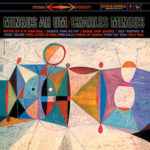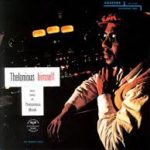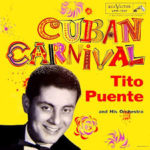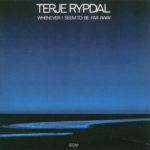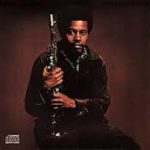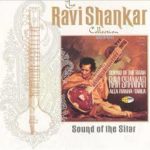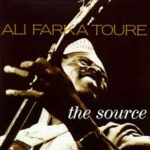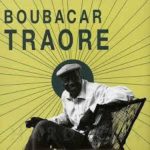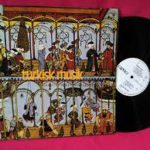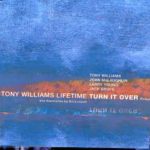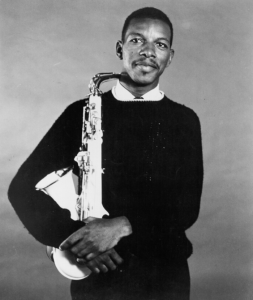Since my initial tour in Turkey with Mohsen Namjoo in December 2015 I’ve been performing as a member in his band on a regular basis barring the Covid break. It’s been an amazing experience being invited into his artistically unique musical and lyrical world of traditional Persian music, the dastgāh and rhythmically poetic forms, old Kurdish melodies, lyrics by Hafez and Rumi, word play, mixed with satire, blues elements, rock riffs, call and response, and a lot of thoughts and feelings. Being exposed to and learning this music has definitely rubbed off on me and altered how I listen forever, especially in regards to the scalar notes and melismatic expressions normal in this culture. It’s typically a 4-piece band with Mohsen’s enormous range of vocal expression, playing setar and some acoustic guitar in his own inimitable way, I’m on electric guitar, this time with electric bassist Kasra Saboktakin from Tehran and Ben Riley, Montréal on drums. The song selections come from a few of the numerous albums he’s released over the years. The audience is typically vast majority Persian who know the songs in Farsi very well, often singing along in the second half of the show. There is a deep connection between the audience and Mohsen and us musicians which has been a reassuring and heartfelt thing to experience. So far we’ve performed together in the US, Canada, the UK, Germany, France, Italy, Switzerland, the Netherlands, Belgium, Turkey, Sweden, and now Australia.
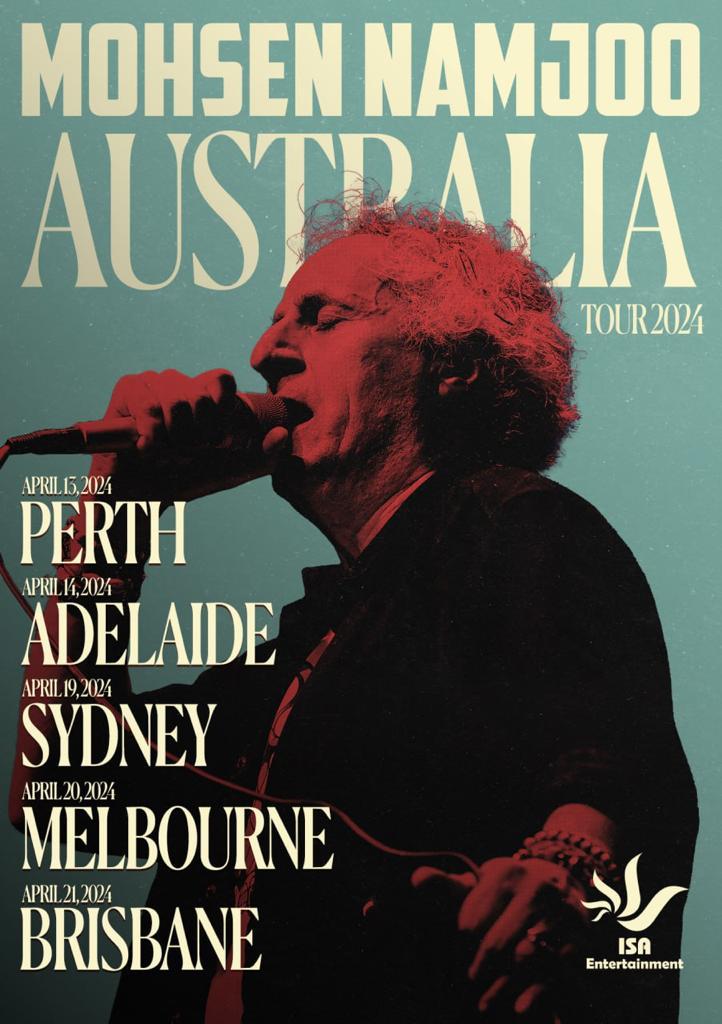

After 3 connecting flights Mohsen and I took together: New York – Los Angeles – Melbourne – Perth we arrived in a time zone 12 hours ahead. It didn’t feel nearly as long or tiring as I had imagined, we were jolly. As we were landing there was an announcement honoring First Nations people. The message was repeated at several public places visited during this trip and on ensuing domestic flights.
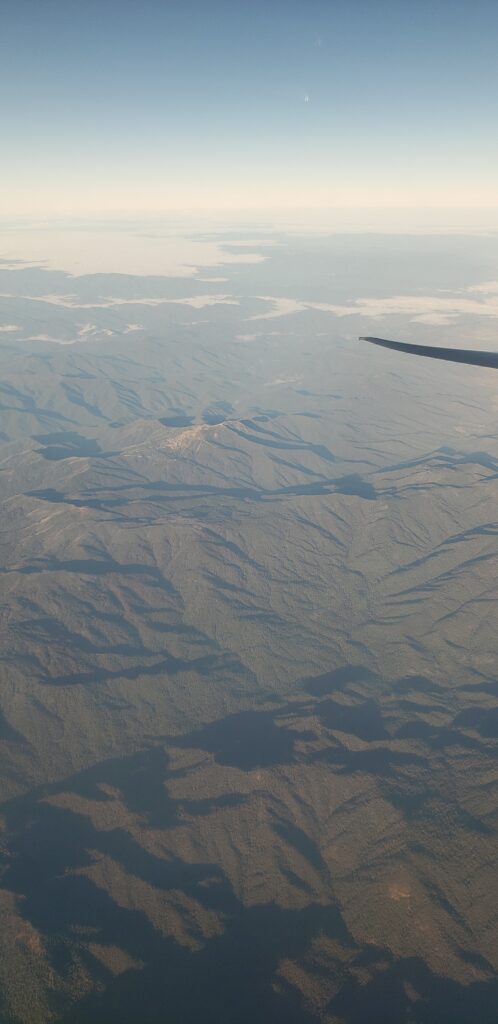
I woke up after a decent night’s sleep and after an avo sandwich brekky at a small homey cafe with a welcoming vibe I walked to the amazing Western Australian Botanic Garden taking in the warm, humid air from the Indian Ocean, getting an easy-going Aussie impression. Eucalyptus trees everywhere, peppermint trees, a few parrots along with the view from Mount Eliza made it a really relaxing start of the fall day.
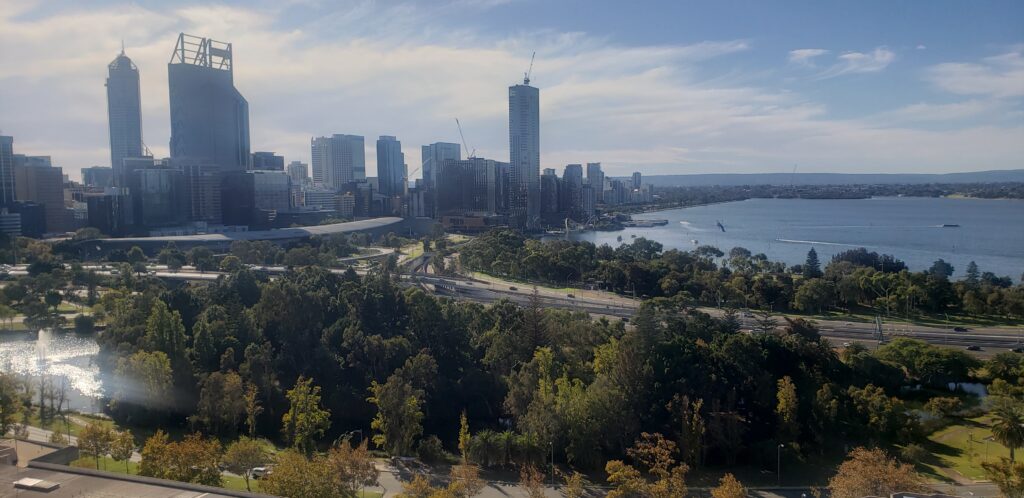
Australia’s pleasantness and relaxed, friendly atmosphere is preceeded by it’s genocidal past. As a visitor it’s impossible not to think about this, and as a Westerner walking on land that once was inhabited by aboriginals brought me a dual feeling. Needless to say I’m used to it after living in the US for 20+ years. I got a great tip from a local about an art exhibit on the theme of the local Noongar people and the white “treatment” of them at Perth Cultural Center so I followed up with a visit there; educational, upsetting, and memorable. Show #1 of the 5-concert tour was that evening and it was time to meet up with the band and organizers to drive to the venue for soundcheck. My amp request on the rider is a “Fender Princeton or equivalent”, a common tube amp to make it simple, not more specific than that, almost always works out well. I brought my Les Paul Goldtop and small pedalboard as usual. We played a 2 hour+ show as is our custom.
Because of the great distances between the 5 largest Australian cities we performed in, flying city to city is a necessity on tour. The following morning we rose very early in order to make a flight to Adelaide, South Australia. After Alireza, one of the organizers, and I haggled with personnel over bringing my guitar on board to place in the overhead bin as usual, they wouldn’t have it at all and I had to accept the ax going with the rest of the luggage. I wasn’t happy about this one bit, luckily it ended up being fine, phew. Upon landing we were driven by our friendly organizer Rasool to his house. A beautiful place neighboring a huge national park with wildlife including venomous snakes and the like. A nice, homey Persian lunch had been prepared, very welcoming indeed. The concert venue took us out of the city to a gorgeous hilly area filled with vineyards and open sky views. A lot of Australian wines come from this state. The bird sounds were fresh to my ears and scenically it was astounding. The venue was smaller than usual with a great sounding room, as a result we heard each other much better and we were tight.
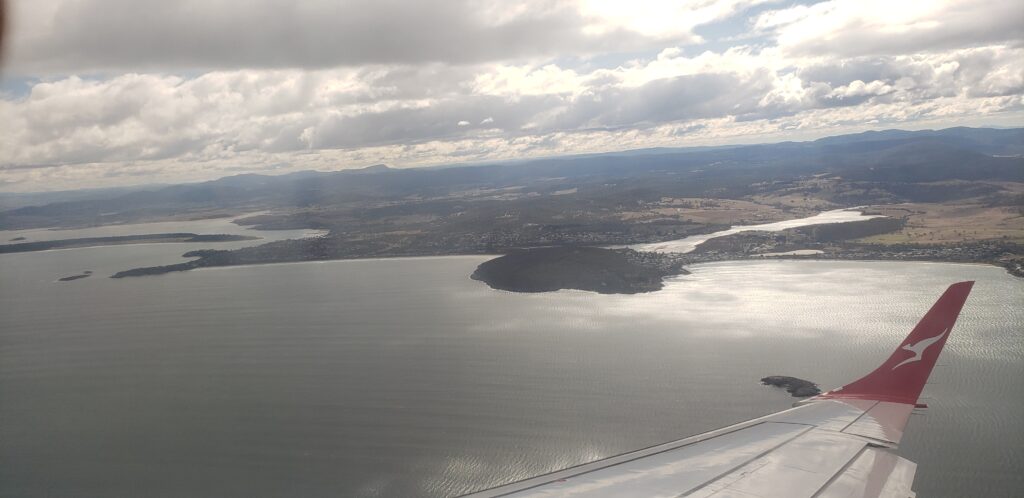
After these first 2 weekend shows we had a few days off before continuing with 3 shows the following weekend. I had planned ahead and seized the day to take a flight to Tasmania! A few years ago it was discovered that I have relatives there. My maternal great-great-great grandfather was one of 16 children on a farm in southern Sweden. In 1885 a single one of his brothers, Lars Hansson, was on a boat from Hamburg to Tasmania (I actually found the passenger list online). This was during a period when the British empire offered land grants to Europeans, after first settling in 1803 and gradually moving and extirpating the aboriginals. When I found out about this young man Lars’ trip in my family a few generations back I was very surprised, as was the rest of the family, nobody knew! To imagine embarking on such a one way 2 1/2 month journey by boat sparks the imagination and resultant questions. He met a woman and they had 14 children down there. The sole reason I learned about this was that a distant cousin in Tassie reached out to me and has the documentation to prove it’s legit. She has done a ton of research. I have to thank Tanya sincerely for taking the step of reaching out to me, and our ensuing email exchanges a couple of years ago proved meaningful and fun. When I landed in Hobart she was there to welcome me and there was good chemistry right away. She took me to a small family-run kitchen on a small road up a hill and I enjoyed a delicious scallop pie while overlooking the water. The temperature is considerably cooler in Tasmania and it also has some of the cleanest air on the planet.
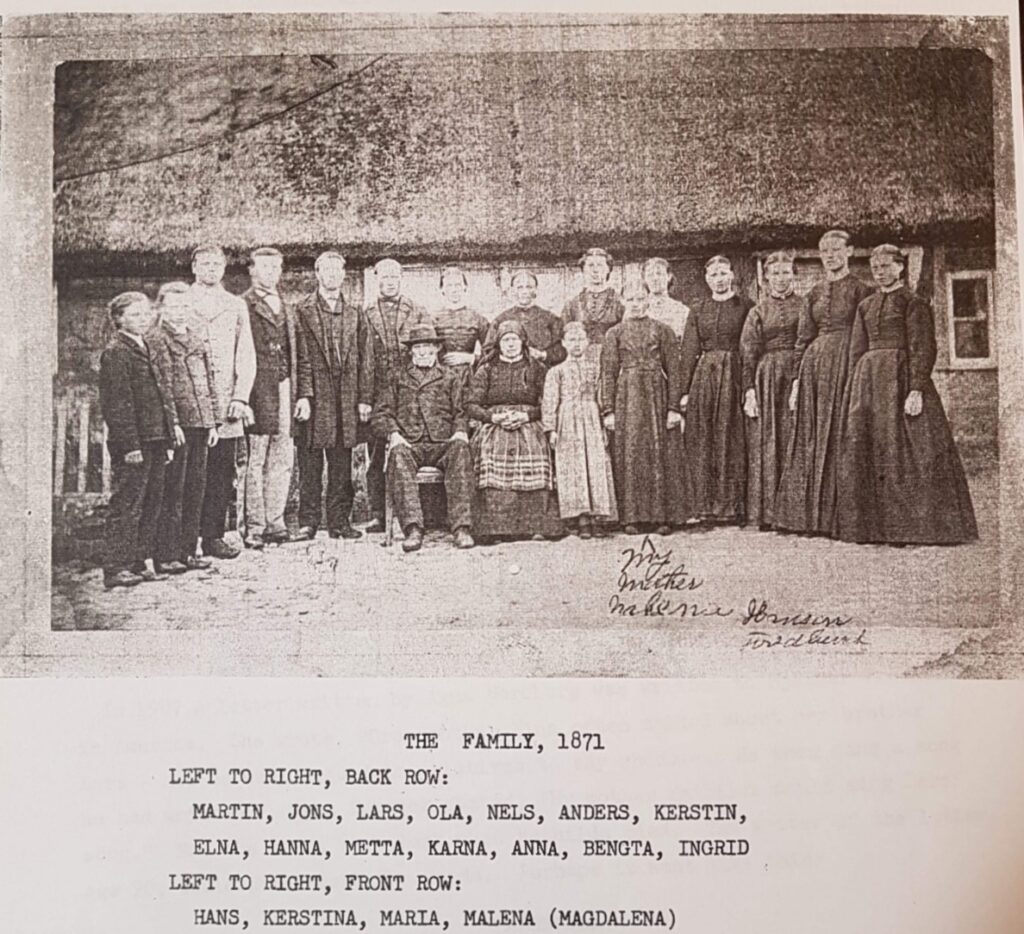
1871 family photo taken in Sweden
Over the next few days I stayed at a hotel in Kingston Beach, a short walk from a small bay beach with nice sunrises and sunsets. Tanya and her family welcomed me with open arms and invited me to dinner the first evening, it was great to connect. A lot of family stories were shared, Tassie history, and they’re into Vikings. The following morning I joined the oldest daughter Hannah for a swim on Kingston Beach, most refreshing. Tanya thoughtfully made herself available for a few days so we could spend time and see sights, this overcast day we drove a couple of hours to Port Arthur, a former British prison, now a museum. Tasmania became a penal colony and in Victorian times the British would send prisoners to the end of the world for punishment and Christian programming. Some were heavy criminals, some had only stolen food, some were children, usually placed in tiny isolated cells. The treatment of prisoners were notoriously dreadful and many were used for labor, put to work on making the land more useful. The area is stunningly gorgeous with sandstone cliffs, surrounded by water. Practically impossible to escape from as the terrain was rugged. As a museum it was a mix of an interesting story, eerie vibe, and good scenery.
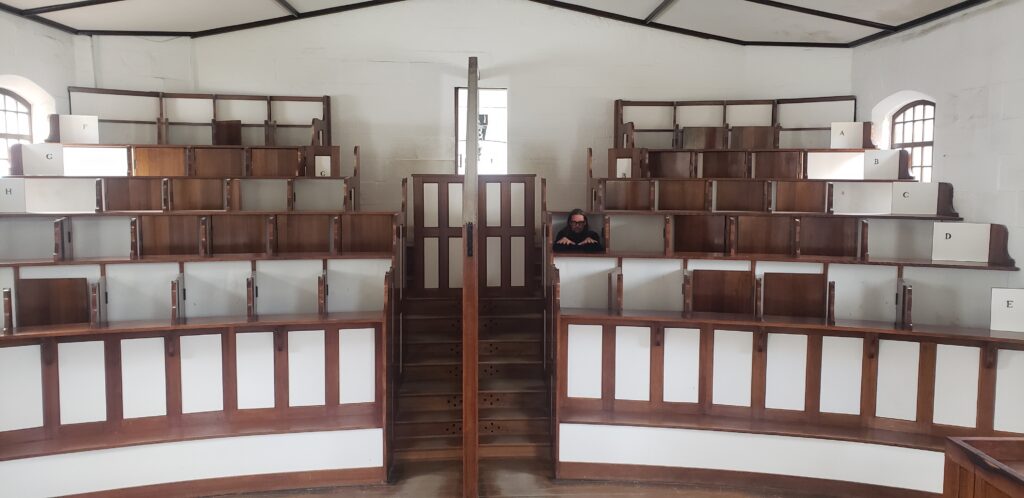
A chapel with narrow, seperated booths for convicts to hear the priest orate in.
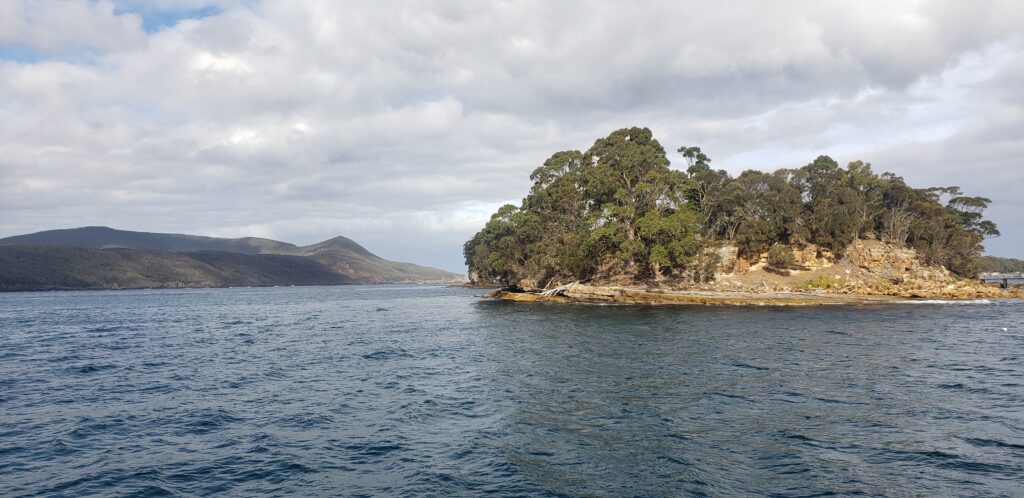
In the evening Tanya had organized a big family get together and dinner for about 20 people at a local restaurant. It was a festive occasion meeting all these relatives with spouses and share stories and impressions, very friendly atmosphere and familial spirit, quite an event.
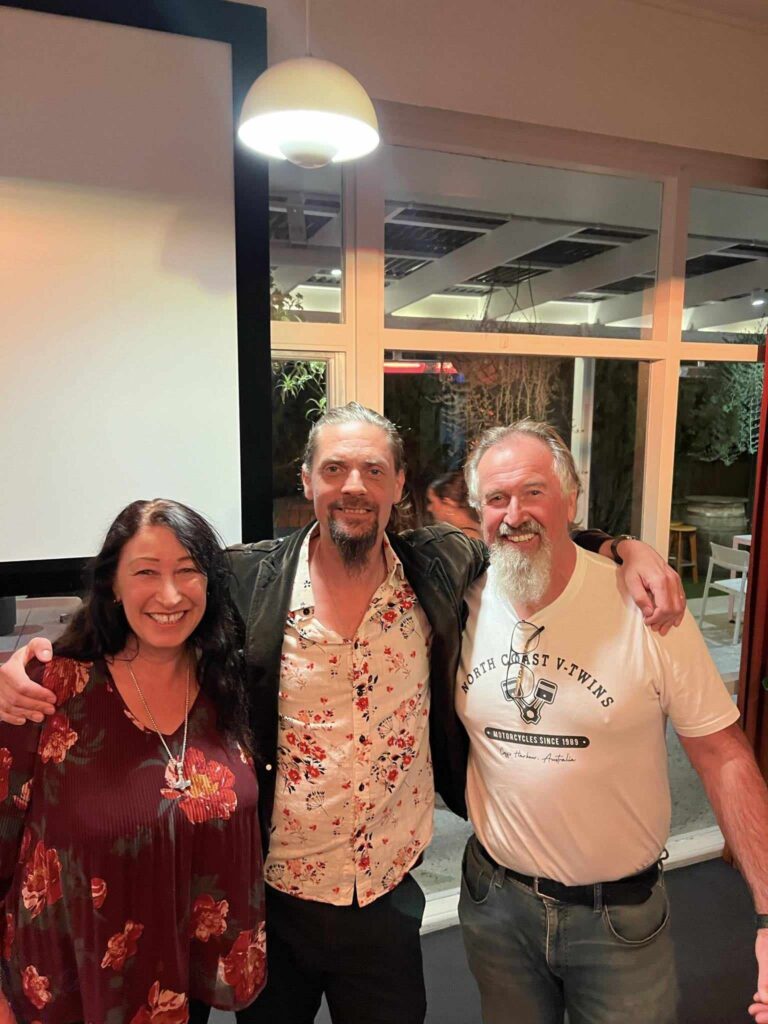
The following morning I went with Hannah to a swimming hole in the bush (forest) for a freezing dip, nice! Today’s excursion was the highlight – Tanya and her pleasant brother Tony took me down to South Bruny Island where Lars ended up at first. After a ferryride from the mainland we drove to historically relevant spots. Timber and coal mining was happening back then. Among other pursuits he had a mill on the southern tip of Adventure Bay. The scenery is among the most beautiful I’ve ever seen; Tasman Sea and New Zeeland to the east, Southern Ocean and Antarctica to the south. The peak in the photo is a spot named after Truganini, an aboriginal Nuenone woman who was a guide to George Robinson (overseer of removing all aboriginals from Tasmania) trekking all over this area on foot. Her story, as related through Robinson’s notes is captivating and somewhat famous. In native tongue they called South Bruny Island “Lunawanna-Alonnah” from what I understand, names that are still on the map. Coal Point had unusually captivating beauty, Hansson Beach named after the family is amazing. After a walk in the bush among gum trees, tea trees and giant kelp we went for a nice lunch (I had wallaby bolognese) and then headed back. After returning I kicked back for a while with a couple of Avo tinnies (afternoon tin cans of beer), digesting my impressions.
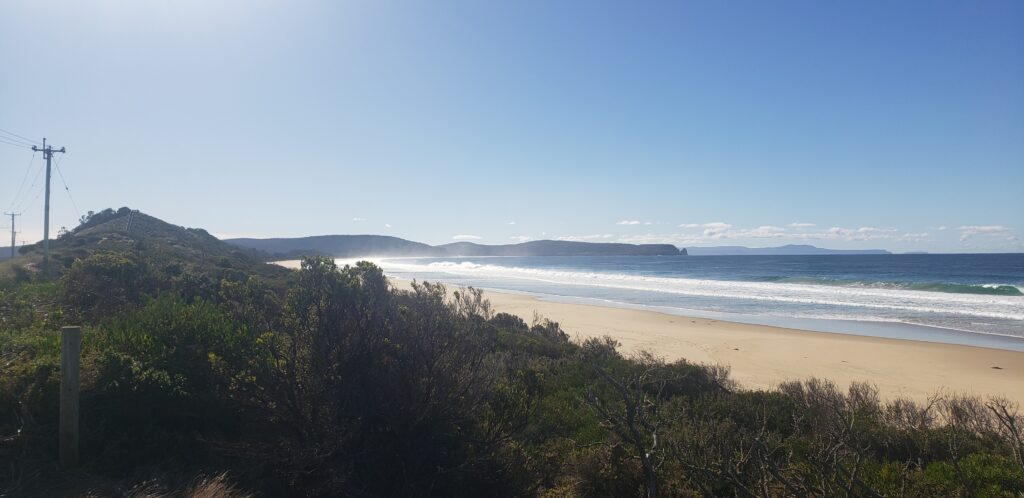
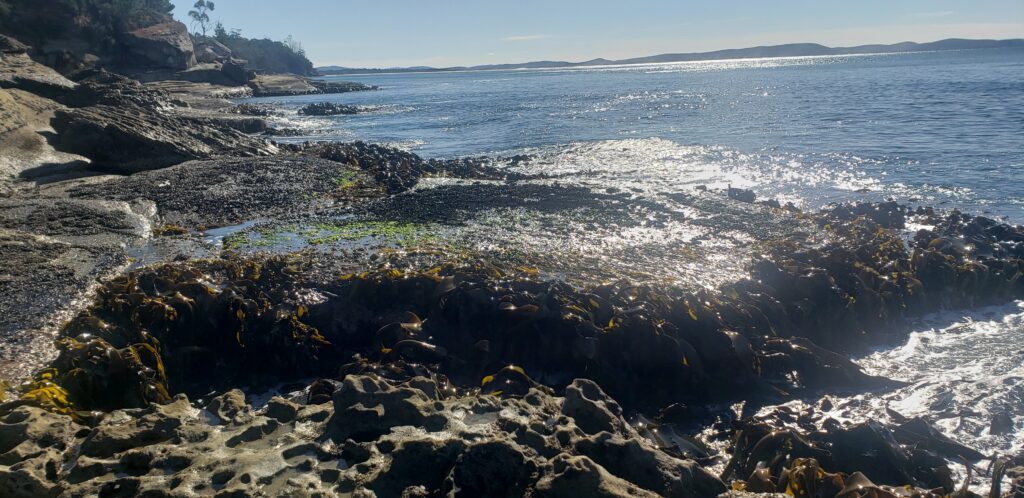
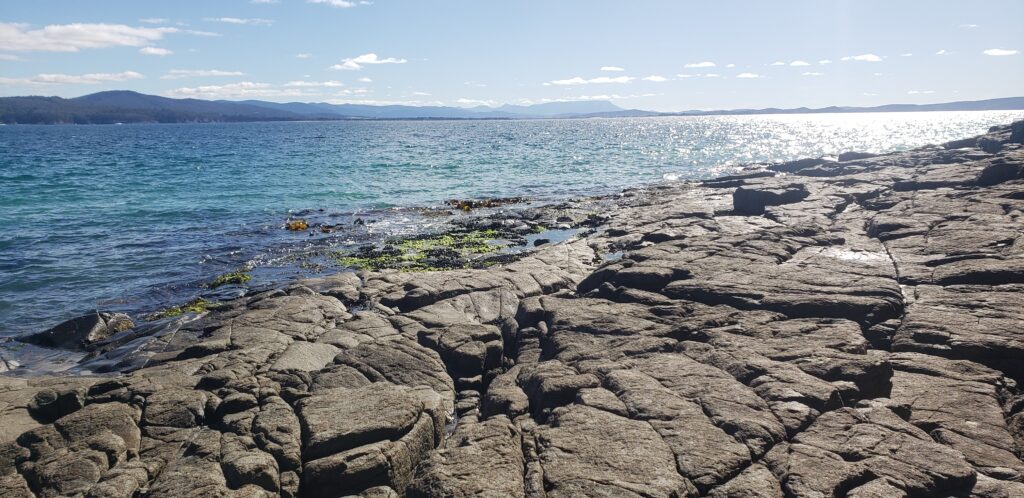
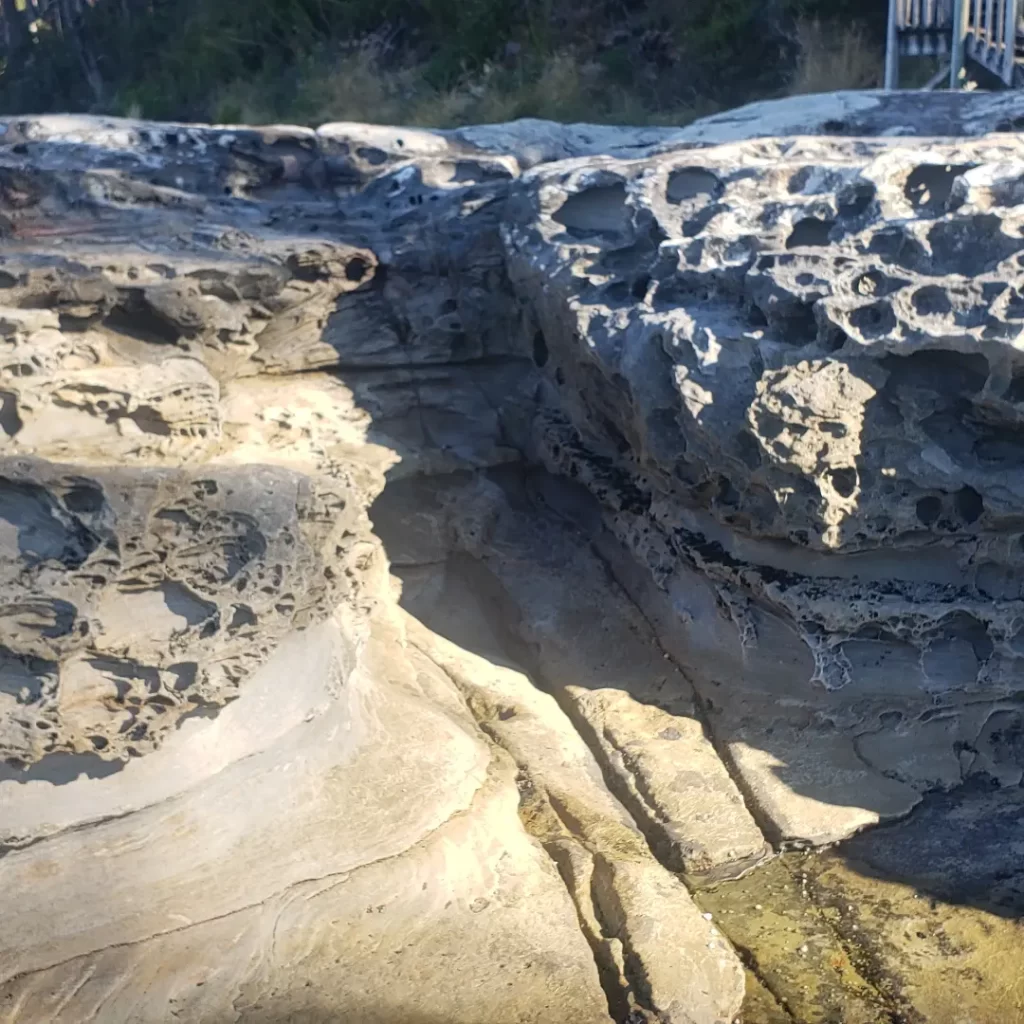
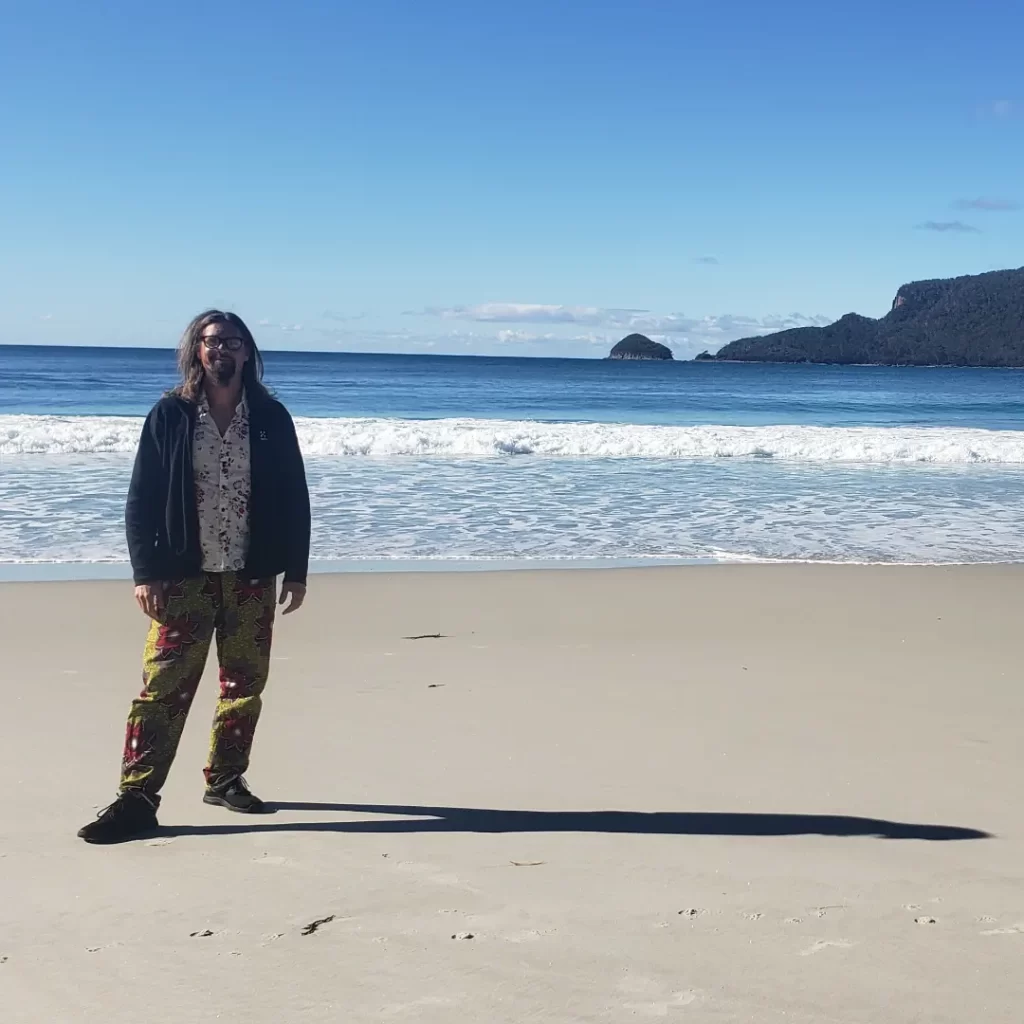
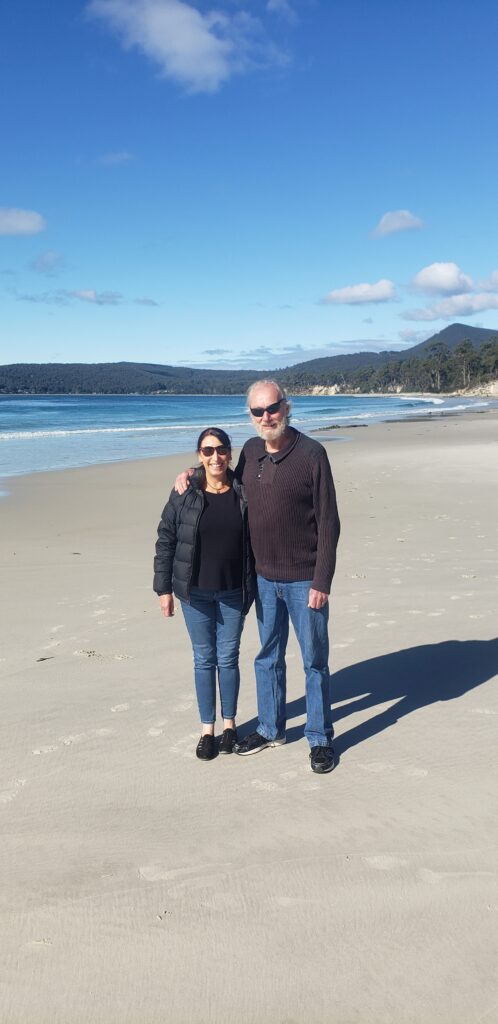
The following day was my last in Tasmania and I went for a jog on the beach as the sun rose. Tanya once again helped me out by driving to Hobart for a quick stop, then to the airport where we happened to meet yet another 2 relatives! All in all this was a visit for me to remember for good.
I flew to Sydney, New South Wales, to meet up with the band and get ready for our next 3 shows. The night before the show we were invited to a rather lavish dinner at Sydney Tower Eye. It was nice to reconnect with the guys in the band again. The next morning I took the train to inner Sydney to visit an art museum (MCA), see the famous opera house and stuff, before the show.
The next morning we flew to Melbourne, Victoria. We stayed in an area called St. Kilda and after getting everything sorted out I ventured on a walk about town and enjoyed the good vibe of people on the town on a Saturday afternoon. The venue was funky in a good sense and this was perhaps the best show of the tour.
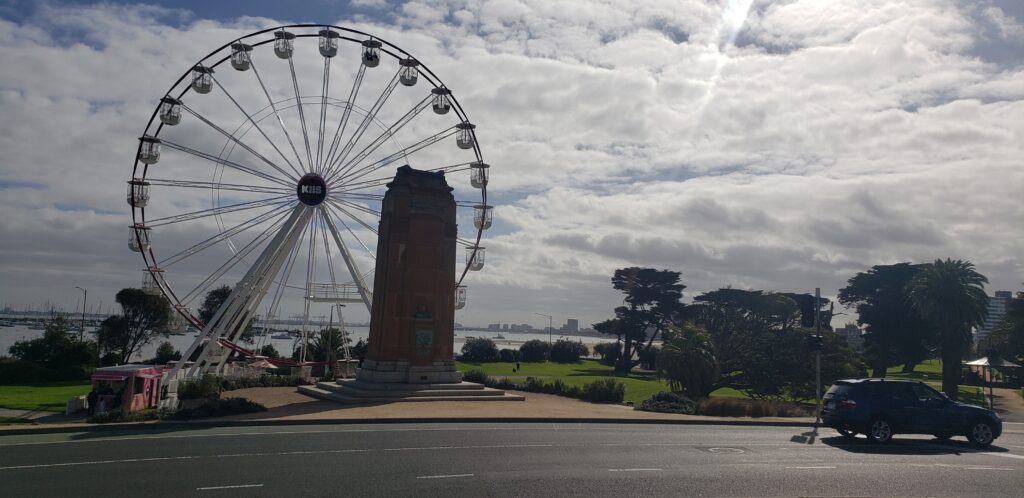
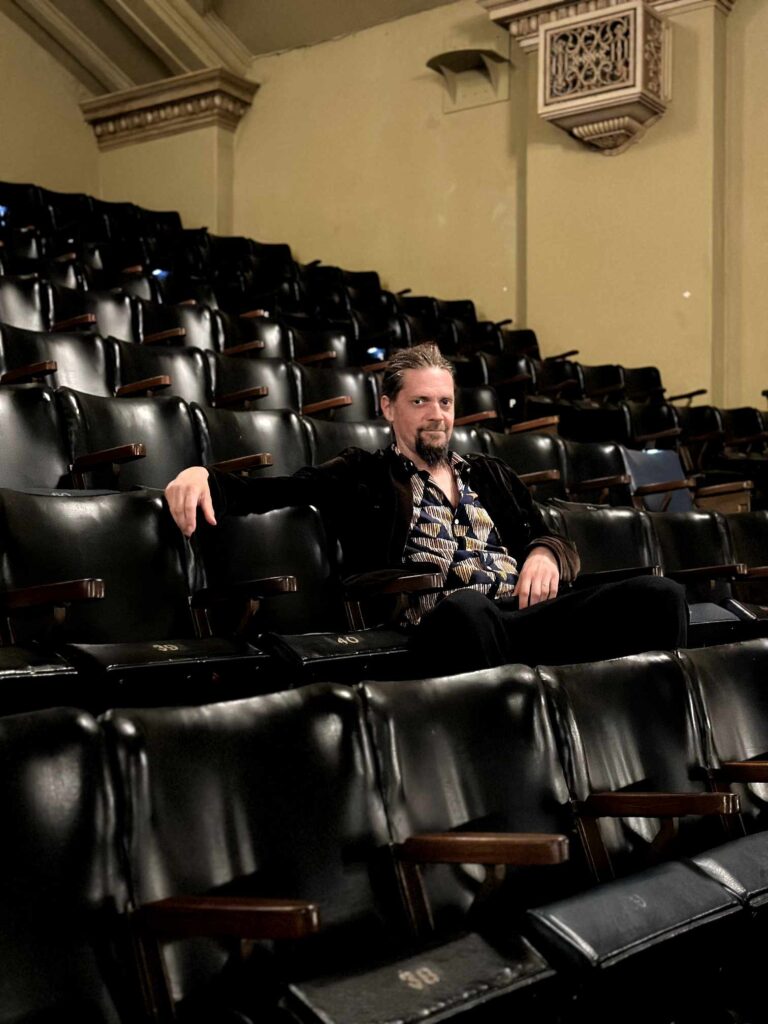
Anders at National Theater in Melbourne
In the morning we flew to Brisbane, Queensland for our last show, it was a good show and we ended on a good note. Hope to make it back!
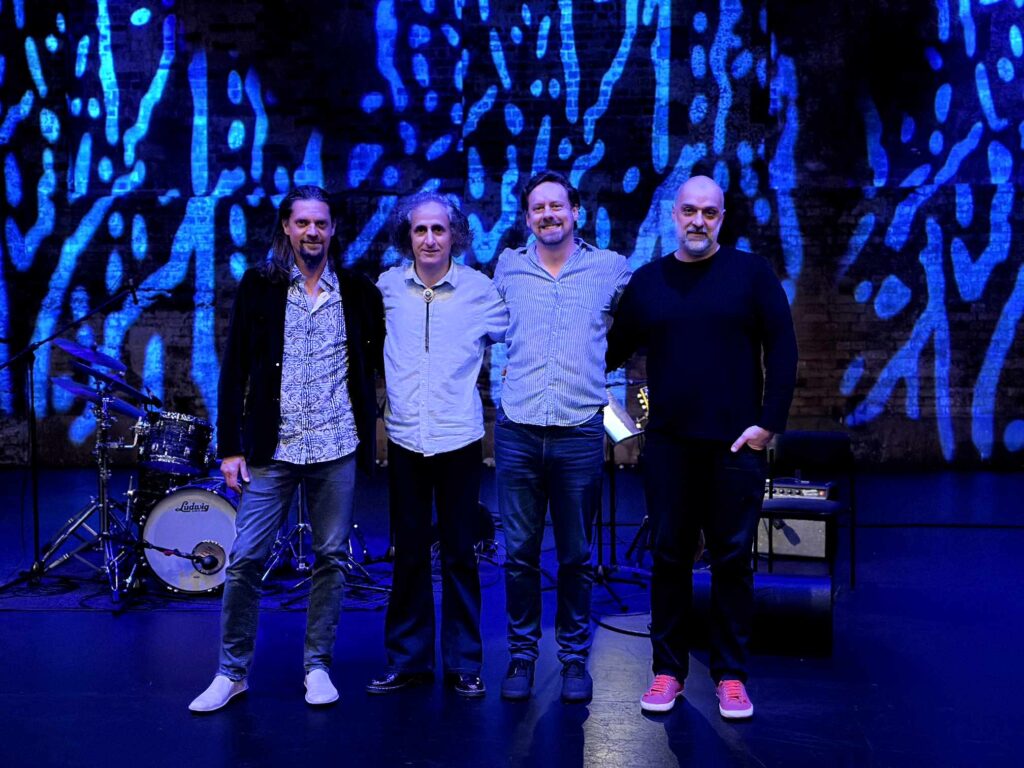
Anders, Mohsen, Ben, Kasra


 & Kerava Jazz in Finland
& Kerava Jazz in Finland  with the Avram Fefer Quartet. Avram and I have been playing here and there for over 10 years. I met and befriended Chad Taylor and Eric Revis who ordinarily play in the band with Marc Ribot who is on the albums. I enjoy this music and playing die hard festivals like these was satisfying.
with the Avram Fefer Quartet. Avram and I have been playing here and there for over 10 years. I met and befriended Chad Taylor and Eric Revis who ordinarily play in the band with Marc Ribot who is on the albums. I enjoy this music and playing die hard festivals like these was satisfying.  to pick up working with Mohsen Namjoo again for the first time since that damn pandemic. The band line-up is new and works well, we had 4 shows at pretty much sold out venues, and 1 in Brussels
to pick up working with Mohsen Namjoo again for the first time since that damn pandemic. The band line-up is new and works well, we had 4 shows at pretty much sold out venues, and 1 in Brussels  . The music took off and the connection he has with the audience was heartfelt as always. Especially this year, in part due to the extreme violence in Iran.
. The music took off and the connection he has with the audience was heartfelt as always. Especially this year, in part due to the extreme violence in Iran.